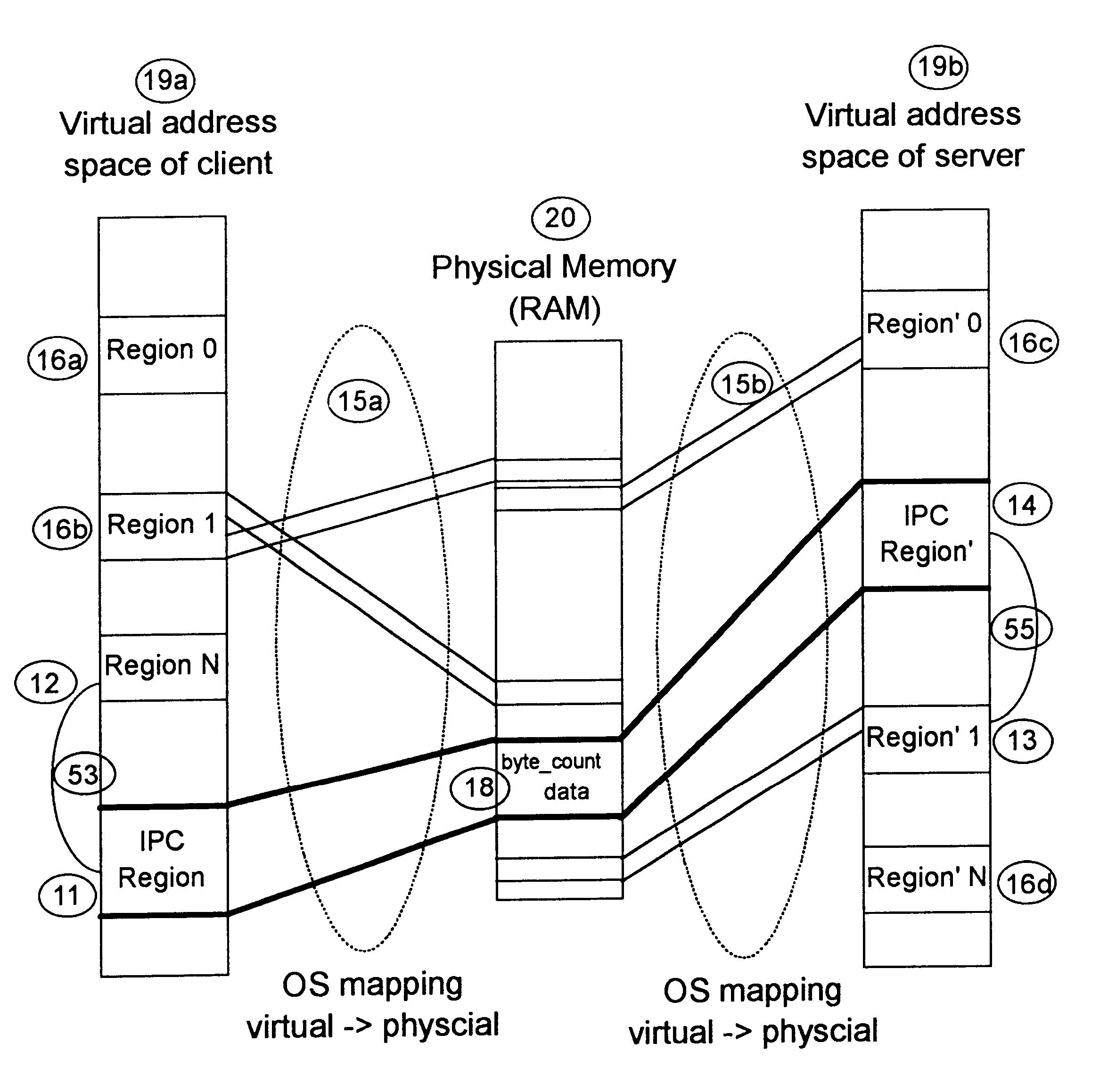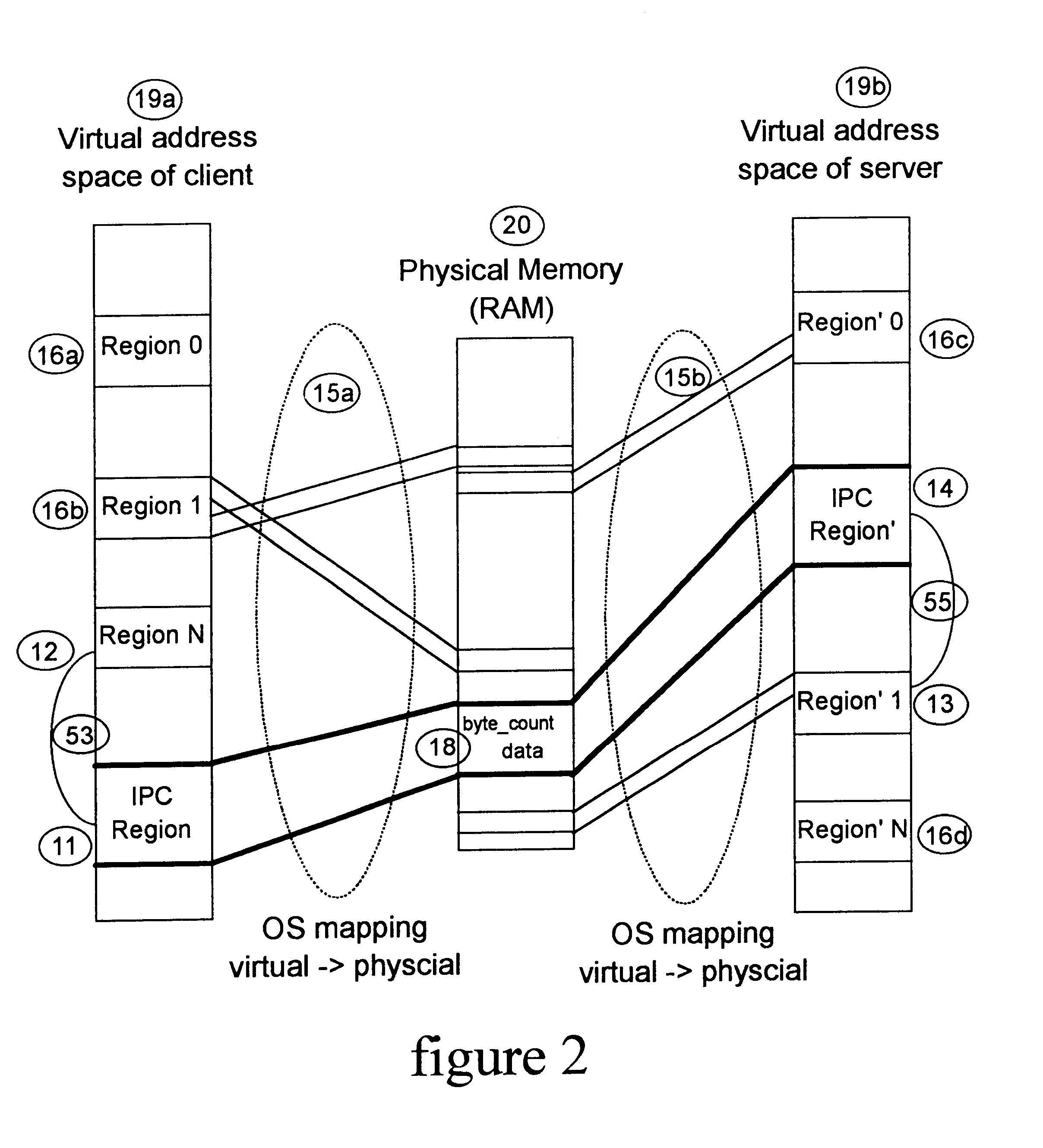Technique for efficiently transferring moderate amounts of data across address space boundary
a technology of address space boundary and data transfer, applied in the field of technology for, can solve the problems of unattractive properties, high cost of sharing across address space, and difficulty in maintaining single-address space operating systems,
- Summary
- Abstract
- Description
- Claims
- Application Information
AI Technical Summary
Benefits of technology
Problems solved by technology
Method used
Image
Examples
Embodiment Construction
Though our invention is not limited to the following described implementation, this implementation demonstrates the potential advantages of using our mechanism over other mechanisms. The preferred embodiment of this inventions is illustrated in FIGS. 1-4. FIG. 1 is a high-level representation of the mechanism used during the common path of performing an IPC, while FIG. 2 is a more detailed version of the same figure. FIG. 3 is a flow chart representing the entire algorithm, and FIG. 4 represents the actions that need to occur in the uncommon path of involuntary preemption while performing an IPC. When a process is created, the kernel sets up a region of virtual memory region marked as the IPC Transfer Region. See 51 in FIGS. 3 and 11 and 14 in FIGS. 1 and 2. Establishment of virtual memory regions occurs once at process creation. This transfer region is mapped via the operating system (15a and 15b in FIG. 2) at a virtual address in each process. The only requirement is that every pr...
PUM
 Login to View More
Login to View More Abstract
Description
Claims
Application Information
 Login to View More
Login to View More - R&D
- Intellectual Property
- Life Sciences
- Materials
- Tech Scout
- Unparalleled Data Quality
- Higher Quality Content
- 60% Fewer Hallucinations
Browse by: Latest US Patents, China's latest patents, Technical Efficacy Thesaurus, Application Domain, Technology Topic, Popular Technical Reports.
© 2025 PatSnap. All rights reserved.Legal|Privacy policy|Modern Slavery Act Transparency Statement|Sitemap|About US| Contact US: help@patsnap.com



